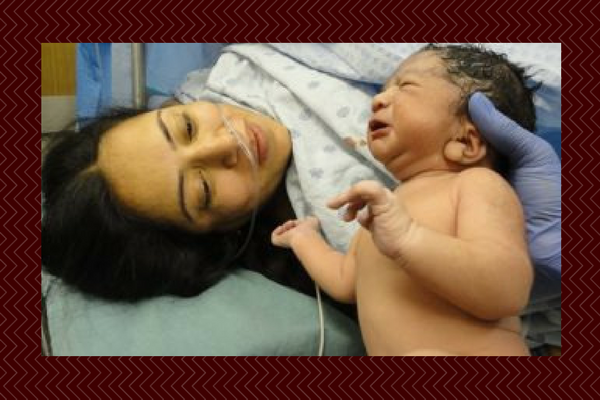The rise in cesarean birth rates and the effects of cesarean birth on mother and baby have become common themes in articles about birth and medical care. It seems everyone from the American Congress of Obstetricians and Gynecologists (ACOG) to Consumer Reports to mommy blogs are talking about the need to reduce the number of cesarean births in the United States. Doula support as a way to help achieve a lower cesarean birth rate was first acknowledged by ACOG in 2014. Doulas have again received a strong endorsement for the role we play in supporting vaginal birth, this time from the California Maternal Quality Care Collaborative (CMQCC). Their evidence-based Toolkit to Support Vaginal Birth and Reduce Primary Cesareans for maternity care practitioners outlines seven strategies, one of which is to #4 Encourage the Use of Doulas and Work Collaboratively to Provide Labor Support. Their view of doulas can be summed up in one simple quote from the Toolkit:
“Doulas should be considered an integral part of the birth team.”
— California Maternal Quality Care Collaborative, Toolkit to Support Vaginal Birth and Reduce Primary Cesareans (p. 46)
The Toolkit also addresses the role of doulas and how to promote stronger teamwork with nurses. That some providers may not understand the role of doulas and may have an “antagonistic or adversarial view of them” is not ignored (p. 40). Doulas are described as having a unique skillset, and it is noted that we can be both an advocate for the birthing woman and be an ally to care providers, including nurses, when we are allowed to “function appropriately” in our role. The authors are aware that doulas have not been fully accepted in all hospital settings and “there are still many misconceptions about doula care, and often there is a stigma surrounding the ‘type’ of woman who has a doula.” (p.46)
To address this, the Toolkit provides specific recommendations to better integrate and support doulas.

Key Strategies for Supporting Intended Vaginal Birth

— Toolkit to Support Vaginal Birth and Reduce Primary Cesareans, Table 9
In detailing this strategy, the Toolkit offers specific recommendations to promote stronger relationships between doulas and nurses to support vaginal birth including:
- Open communication between the doula and the nurse and a “mutual understanding of roles.” Unit guidelines may need to be developed to foster delineation of roles and expectations. Posting these guidelines at the bedside may be useful.
- Collegial rapport and joint understanding that the doula’s professional knowledge of labor support techniques complements the nurse’s extensive technical and medical skillset
- Two-way teaching. Doulas appreciate thoughtful and respectful guidance and feedback, especially those training for future medical or nursing professions. Likewise, nurses and nursing students can learn extensive labor support skills from doulas if willing to do so.
For hospitals, the Toolkit offers these “Innovative strategies to support the use of doulas”:
- Working with a local doula organization to provide information, support, and resources to families
- Connecting with community-based doula programs
- Considering the implementation of a hospital-based program
Many of the strategies outlined in the Toolkit speak to maternity care practices and hospital policies that support vaginal birth. The importance of education for birthing families is mentioned in more than one strategy with recommendations that practitioners educate families on what to expect in early labor, the safety of laboring at home in early labor, comfort measures partners or other family members can provide throughout labor, and the use of intermittent monitoring in labor. The importance of childbirth education is emphasized in a list of tools available to providers, hospitals and families in Appendix C of the toolkit as well.
The Toolkit is free to download from their website after registering with CMQCC and completing a short survey. As a follow-up, CMQCC will be releasing both a teaching slide set and an implementation guide.
— Adrianne Gordon, CD(DONA), MBA
References
Smith H, Peterson N, Lagrew D, Main E. 2016. Toolkit to Support Vaginal Birth and Reduce Primary Cesareans: A Quality Improvement Toolkit. Stanford, CA: California Maternal Quality Care Collaborative.


